#national park conservation
Text

Sunset Pillar • Colorado National Monument
#photography#give credit#my photo#scenic photography#landscape#sunset#sunset photography#light pillar#original photography on tumblr#my work#burnt skies#last light#colorpop#Colorado national monument#national park conservation#don’t bust the crust#road trip#scenic road#scenicdrive#scenicsunset#capture the moment#us national parks#aesthetic
8 notes
·
View notes
Text
"Nouabalé-Ndoki National Park in Brazzaville, Republic of Congo has a lot to celebrate.
The park, which celebrated its 30th anniversary on December 31 of 2023, also shared an exciting conservation milestone: 2023 was the first year without any elephant poaching detected.
“We didn’t detect any elephants killed in the Park this year, a first for the Park since [we] began collecting data. This success comes after nearly a decade of concerted efforts to protect forest elephants from armed poaching in the Park,” Ben Evans, the Park’s management unit director, said in a press release.
Nouabalé-Ndoki National Park was developed by the government of Congo in 1993 to maintain biodiversity conservation in the region, and since 2014, has been cared for through a public-private partnership between Congo’s Ministry of Forest Economy and the Wildlife Conservation Society.

Pictured: Nouabalé-Ndoki National Park. Photo courtesy of Scott Ramsay/Wildlife Conservation Society
Evans credits the ongoing collaboration with this milestone, as the MEF and WCS have helped address escalating threats to wildlife in the region.
This specifically includes investments in the ranger force, which has increased training and self-defense capabilities, making the force more effective in upholding the law — and the rights of humans and animals.
“Thanks to the strengthening of our anti-poaching teams and new communication technologies, we have been able to reduce poaching considerably,” Max Mviri, a park warden for the Congolese government, said in a video for the Park’s anniversary.
“Today, we have more than 90 eco-guards, all of whom have received extensive training and undergo refresher courses,” Mviri continued. “What makes a difference is that 90% of our eco-guards come from villages close to the Park. This gives them extra motivation, as they are protecting their forest.”
As other threats such as logging and road infrastructure development impact the area’s wildlife, the Park’s partnerships with local communities and Indigenous populations in the neighboring villages of Bomassa and Makao are increasingly vital.
“We’ve seen great changes, great progress. We’ve seen the abundance of elephants, large mammals in the village,” Gabriel Mobolambi, chief of Bomassa village, said in the same video. “And also on our side, we benefit from conservation.”
Coinciding with the Park’s anniversary is the roll-out of a tourism-focused website, aiming to generate 15% of its revenue from visitors, which contributes significantly to the local economy...
Nouabalé-Ndoki also recently became the world’s first certified Gorilla Friendly National Park, ensuring best practices are in place for all gorilla-related operations, from tourism to research.
But gorillas and elephants — of which there are over 2,000 and 3,000, respectively — aren’t the only species visitors can admire in the 4,334-square-kilometer protected area.
The Park is also home to large populations of mammals such as chimpanzees and bongos, as well as a diverse range of reptiles, birds, and insects. For the flora fans, Nouabalé-Ndoki also boasts a century-old mahogany tree, and a massive forest of large-diameter trees.
Beyond the beauty of the Park, these tourism opportunities pave the way for major developments for local communities.
“The Park has created long-term jobs, which are rare in the region, and has brought substantial benefits to neighboring communities. Tourism is also emerging as a promising avenue for economic growth,” Mobolambi, the chief of Bomassa village, said in a press release.
The Park and its partners also work to provide education, health centers, agricultural opportunities, and access to clean water, as well, helping to create a safe environment for the people who share the land with these protected animals.
In fact, the Makao and Bomassa health centers receive up to 250 patients a month, and Nouabalé-Ndoki provides continuous access to primary education for nearly 300 students in neighboring villages.
It is this intersectional approach that maintains a mutual respect between humans and wildlife and encourages the investment in conservation programs, which lead to successes like 2023’s poaching-free milestone...
Evans, of the Park’s management, added in the anniversary video: “Thanks to the trust that has been built up between all those involved in conservation, we know that Nouabalé-Ndoki will remain a crucial refuge for wildlife for the generations to come.”"
-via Good Good Good, February 15, 2024
#conservation#congo#republic of congo#elephant#gorilla#endangered species#biodiversity#conservation news#conservation efforts#indigenous communities#national park#protected areas#poaching#elephant poaching#ecology#biology#environment#environmental news#forests
980 notes
·
View notes
Text
@daisygilardini
#Wapusk National Park#polar bears#polar bear cub#wildlife photography#conservation#cute animals#curators on tumblr#family
943 notes
·
View notes
Text
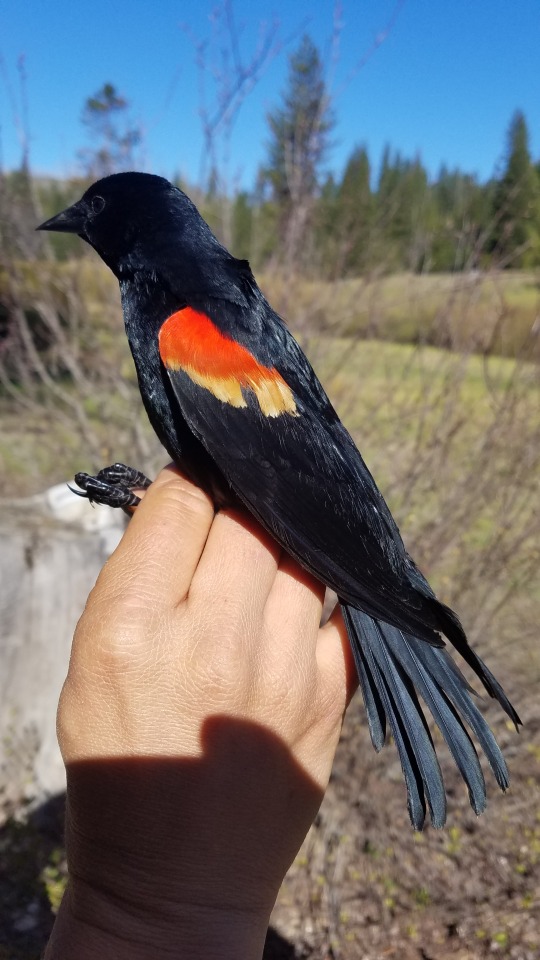
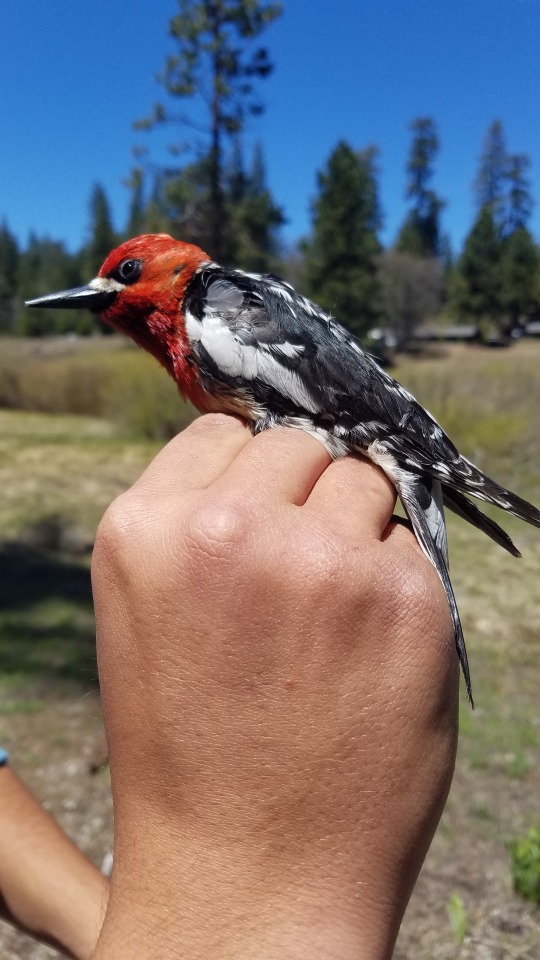

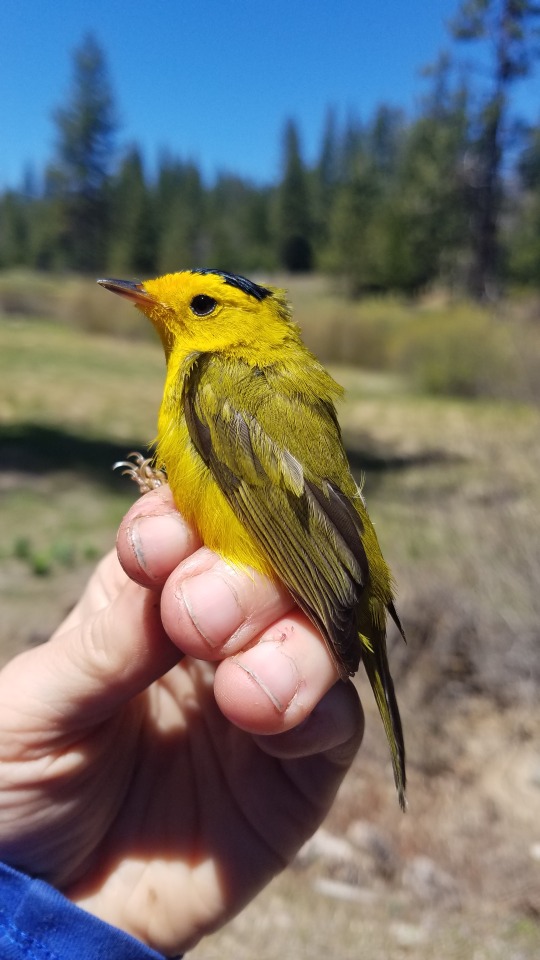

Hey all! I don't typically post my photos here but heck, I should. This is just a heads up that you won't see much from me for the next couple weeks as I go on my yearly fieldwork trip to Yosemite to train our summer bird banding crew in how to run their stations. These MAPS (Monitoring Avian Productivity and Survivorship) stations are part of a long-term (30+ years!) monitoring project that has resulted in some amazing science, from teaching us about how climate change affects birds at different altitudes to setting new longevity records (we have a 20-year old woodpecker!).
All of this is done through The Institute for Bird Populations. Go check out the website and learn more about what we do for birds around the world!
#birdblr#ornithology#birds#birb#borb#songbirds#red-winged blackbird#red-breasted sapsucker#macgillivray's warbler#wilson's warbler#yosemite#yosemite national park#science#wildlife conservation
785 notes
·
View notes
Text
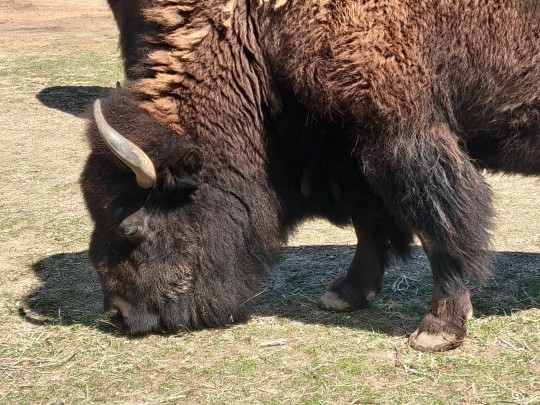
American bison (Bison bison)
#can you guys tell bison are my fave animal#mine#bison#hoofstock#animals#wildlife#prairie#buffalo#american bison#nature#naturalist#nature photography#photography#mammals#ecology#north america#north american wildlife#conservation#ecologist#biologist#wildlife biology#wildlife biologist#biology#national parks#badlands#badlands national park#national park
94 notes
·
View notes
Text
I've been organizing a writer's retreat since 2018 and this was our first year back since the pandemic. Here's a video of what a house full of writers (at work) looks like. 😁
#meganwhalenturner#stanfordhouse#cuyahoga valley national park#conservancy for the cuyahoga valley national park#erinbow#michelle houts#tricia springstubb#edie patou#cinda williams chima#rj-anderson
74 notes
·
View notes
Text
Rethinking our relationship with nature

Keeping up with the Solarpunk topic. But also a general thing I am thinking about a lot - not just because I was visiting a lecture module on it last semester.
I think we as a species (but also as a culture) have a problem in how we relate to the environment and nature. It is hard to find words of it, but we interact with nature a lot like we would interact with an amusement park. Also, we do not see ourselves as part of nature. That is also seen in the words. We differenciate between nature and culture. Nature being something that has no or little influence from people. Culture being what has been influenced by people.
What people forget about that: Humans are part of nature. We are animals. Yes, very intelligent animals who have managed to kinda perfect the entire tool usage. But we are in the end just animals and are part of nature.
It is kinda the issue with the entire climate change thing. People really do not understand, that we are not only the reason for it, but will also be suffer from the fallout. Because we exist within nature.
While the entire "indigenous folks as noble savages" shit is super tired, it is a fact that a lot of indigenous cultures still are aware of the fact that they exist within nature.
Now, Solarpunk rightfully often makes clear rules about no "eco fascism", but many do not realize the many parts of eco fascism. Part of that is and always has been the entire "nature as different from culture" and "nature as a thing people can visit". The entire idea of viewing nature only in the way, how it might serve us, is part of the entire problem.
I think a big issue, too, is how we just allow nature to do its thing within certain areas. Aka National Parks (that is without going into the eco fascist roots of the entire National Parks thing) and nature reservations. Here in Germany we recently have had a lot of protests and at times bloody confrontations with police over it. Because the entire thing about the "nature reservations" is "this is the one zone where nature is allowed", but this right of nature can be taken away at any time. Because what is happening over here recently is that several old forests have been destroyed, because they found coal underneath.
The issue of course is, that nature cannot speak for itself. It does not have a voice. And... yeah.
I am rambling, I know. But there is also the thing with the insects. We are all about saving the bees. But bees are not the only important insects. Because the eco-system is more complex than that.
It is frustrating.

#solarpunk#nature#environmentalism#environment#conservation#climate fiction#indigenous rights#green energy#national parks#climate change#climate justice
167 notes
·
View notes
Text
Shout out to the National Park Service for doing the work 🌲 🏔️ 🦅🌵🦌🍄🍂🌳🏕️

And a reminder to hug your local park ranger, but ask first, not all of them like it
#national park#nature#national park service#national parks#park ranger#the great outdoors#protect our wildlife#wildlife#conservation#outdoor education#naturecore#nature conservation#can you paint with all the colors of the wind
183 notes
·
View notes
Text
#acadia national park#apex predator#biodiversity#birds#candice gaukel andrews#climate change#conservation#covid 19#ecotravel#environment#glacier national park#global warming#human-wildlife conflict#mammals#national parks#natural habitat adventures#nathab#natural habitats#nature#red fox#science#science and environment#scientific research#trails#us national parks#wild#wildlife#wildlife corridors#world wildlife fund#wwf
116 notes
·
View notes
Photo

Wolves Are Making a Comeback at Michigan’s Isle Royale National Park
Since reintroduction in 2018, the wolves have rebounded from just 2 inbred individuals to 31 healthy animals
Wolves are making a comeback at Isle Royale National Park in Michigan after nearly disappearing from the rugged island chain because of inbreeding and disease.
The archipelago in northwestern Lake Superior—centered around a 207-square-mile island—is now home to 31 wolves, despite hosting only two in 2018. According to the latest survey led by researchers at Michigan Technological University, the wolf population has grown by three individuals since last year. And scientists are hopeful the group will be even larger when they count again:
Based on their observations, they suspect up to five female wolves may have pups this summer...
Read more: https://www.smithsonianmag.com/smart-news/wolves-are-making-a-comeback-at-michigans-isle-royale-national-park-180982382
#wolf#wolves#wolf conservation#canid#mammal#animals#nature#conservation#environment#north america#wildlife science#science#public lands#national parks
120 notes
·
View notes
Link
“More frequent appearances by wild animals have been observed in the part of the Northeast China Tiger and Leopard National Park located in Hunchun, Northeast China's Jilin Province, by a comprehensive air, space and land system, showing an increase in the amount of wildlife in the area and an improvement in the ecological environment after years of efforts to protect Siberian tigers and Amur leopards in northeastern China, the Global Times learned from the park on Tuesday.
Now Siberian tigers can be seen nearly every day, according to Li Wanlu who works at the monitoring center and observes wildlife in the park via an air-space-land comprehensive monitoring system.
The more frequent appearance of Siberian tigers captured by the system demonstrates the improvement of the ecological environment in the park, which has led to an increase in the number of wild animals in the area, Li told the Global Times.
According to data released in October 2021, the number of wild Siberian tigers in the park has increased from 27 to 50 since the start of the pilot program, while that of Amur leopards has increased from 42 to 60, with more than 10 tiger cubs and seven leopard cubs discovered.
As one of the first national parks in China, the Northeast China Tiger and Leopard National Park started pilot operation in January 2017, covering a planned area of 14,065 square kilometers.”
#conservation#Amur leopard#Siberian tiger#China#Far Eastern leopard#Amur tiger#leopard#tiger#big cats#Northeast China Tiger and Leopard National Park#article#wild
97 notes
·
View notes
Text
The population of giant pandas in the wild has nearly doubled as China steps up its conservation efforts.
China’s National Forestry and Grassland Administration said on Jan 25 there are now around 1,900 pandas in the wild from some 1,100 in the 1980s.
This has been due to China’s efforts to protect the species, considered a national treasure, said Mr Zhang Yue, an official with the administration.
The Giant Panda National Park was established in October 2021, covering a total area of over 22,000 sq km and providing a home to around 72 per cent of the wild giant panda population.
Protected areas for giant pandas have grown from 1.39 million ha to 2.58 million ha since 2012.
The International Union for Conservation of Nature has adjusted the status of giant pandas from “endangered” to “vulnerable”.
“This indicates that China’s giant panda conservation efforts have been recognised by the international wildlife conservation community,” Mr Zhang said.
The global captive population of giant pandas, meanwhile, has now reached 728, with 46 pandas successfully bred in captivity in 2023.
The genetic diversity of captive giant pandas has also improved. The current captive population of giant pandas can maintain 90 per cent genetic diversity for up to 200 years.
As for giant pandas living abroad, Mr Zhang said China has organised field inspections and assessments of 23 overseas cooperation institutions in 19 countries since 2023.
“The cooperation institutions generally meet the requirements in terms of venue construction, feeding and nursing, and disease prevention and control measures,” Mr Zhang said, adding that pandas living abroad are generally “in good health”.
He said China will further improve the international cooperation management mechanism for giant pandas, carry out regular daily health monitoring and field inspection and assessment, and continue to strengthen cooperation with international partners for the protection of endangered species and biodiversity.
-via The Straits Times, January 25, 2024
#panda#panda bear#pandas#china#endangered species#conservation#conservation news#conservation efforts#conservation practices#ecology#wildlife conservation#zoo animals#zoology#wildlife#wild animals#national park#giant panda national park#icun#good news#hope#hopepunk
994 notes
·
View notes
Text
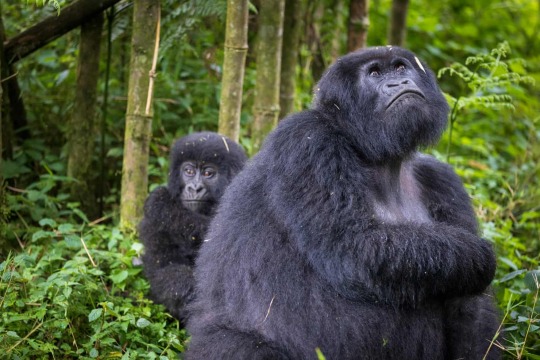
Endangered mountain gorillas in Volcanoes national park, Rwanda, where the International Gorilla Conservation Programme is working to protect them
Photograph: FFI R5/ Steph Baker/Fauna & Flora
#ffi r5#photographer#steph baker#fauna & flora#mountain gorillas#gorilla#ape#animal#mammal#wildlife#volcanoes national park#rwanda#international gorilla conservation programme#nature
23 notes
·
View notes
Text

Yurok tribal members lead a redwood canoe tour on the lower Klamath River on Tuesday, June 8, 2021, in Klamath, Calif. (AP Photo/Nathan Howard, File)
(I could have sworn I read this in a post on here, but I just cannot find it anywhere. So here it is... maybe again for some folks.)
California tribe that lost 90% of land during Gold Rush to get site to serve as gateway to redwoods
By Associated Press Laguna Beach
PUBLISHED 4:54 PM PT Mar. 19, 2024
Source.
California’s Yurok Tribe, which had 90% of its territory taken from it during the Gold Rush of the mid-1800s, will be getting a slice of its land back to serve as a new gateway to Redwood National and State Parks visited by 1 million people a year.
The tribe signed a memorandum of understanding Tuesday with California and the National Park Service for 125 acres in Humboldt County to be transferred to the Yurok in 2026 after the restoration of salmon habitat Officials say the tribe will be the first Native people to co-manage returned land with the National Park Service The arrangement with the Redwood National and State Parks and the nonprofit Save the Redwoods League is part of a growing Land Back movement It seeks to return Indigenous homelands to descendants of those who inhabited those areas long before European settlers arrived
The Yurok will be the first Native people to manage tribal land with the National Park Service under a historic memorandum of understanding signed Tuesday by the tribe, Redwood National and State Parks and the nonprofit Save the Redwoods League.
The agreement “starts the process of changing the narrative about how, by whom and for whom we steward natural lands,” Sam Hodder, president and CEO of Save the Redwoods League, said in a statement.
The tribe will take ownership in 2026 of 125 acres near the tiny Northern California community of Orick in Humboldt County after restoration of a local tributary, Prairie Creek, is complete under the deal. The site will introduce visitors to Yurok customs, culture and history, the tribe said.
The area is home to the world’s tallest treees — some reaching more than 350 feet. It’s about a mile from the Pacific coast and adjacent to the Redwood National and State Parks, which includes one national park and three California state parks totaling nearly 132,000 acres.
The return of the land — named ’O Rew in the Yurok Language — more than a century after it was stolen from California’s largest tribe is proof of the “sheer will and perseverance of the Yurok people,” said Rosie Clayburn, the tribe’s cultural resources director. “We kind of don’t give up.”
For the tribe, redwoods are considered living beings and traditionally only fallen trees have been used to build their homes and canoes.
More below the cut:

This drone photo taken Monday, Jan. 29, 2024, shows the site of a salmon restoration project at Prairie Creek, which runs from Redwood National and State Parks, Calif., and flows through land that will be returned to the Yurok Tribe. (AP Photo/Terry Chea, File)
“As the original stewards of this land, we look forward to working together with the Redwood National and State Parks to manage it,” Clayburn said. “This is work that we’ve always done, and continued to fight for, but I feel like the rest of world is catching up right now and starting to see that Native people know how to manage this land the best.”
The property is at the heart of the tribe’s ancestral land and was taken in the 1800s to exploit its old-growth redwoods and other natural resources, the tribe said. Save the Redwoods League bought the property in 2013 and began working with the tribe and others to restore it.
Much of the property was paved over by a lumber operation that worked there for 50 years and also buried Prairie Creek, where salmon would swim upstream from the Pacific to spawn.
A growing Land Back movement has been returning Indigenous homelands to the descendants of those who lived there for millennia before European settlers arrived. That has seen Native American tribes taking a greater role in restoring rivers and lands to how they were before they were expropriated.
Last week, a 2.2-acre parking lot was returned to the Ohlone people where they established the first human settlement beside San Francisco Bay 5,700 years ago. In 2022, more than 500 acres of redwood forest on the Lost Coast were returned to the InterTribal Sinkyone Wilderness Council, a group of 10 tribes.
The ’O Rew property represents just a tiny fraction of the more than 500,000 acres of the ancestral land of the Yurok, whose reservation straddles the lower 44 miles of the Klamath River. The Yurok tribe is also helping lead efforts in the largest dam removal project in U.S. history along the California-Oregon border to restore the Klamath and boost the salmon population.
Plans for ‘O Rew include a traditional Yurok village of redwood plank houses and a sweat house. There also will be a new visitor and cultural center displaying scores of sacred artefacts from deerskins to baskets that have been returned to the tribe from university and museum collections, Clayburn said.
The center, which will include information on the redwoods and forest restoration, also will serve as a hub for the tribe to carry out their traditions, she said.
It will add more than a mile of new trails, including a new segment of the California Coastal Trail, with interpretive exhibits. The trails will connect to many of the existing trails inside the parks, including to popular old-growth redwood groves.

This drone photo taken on Monday, Jan. 29, 2024, shows a salmon restoration project at Prairie Creek, which runs from Redwood National and State Parks, Calif., and flows through land that will be returned to the Yurok Tribe. (AP Photo/Terry Chea)
The tribe had already been restoring salmon habitat for three years on the property, building a meandering stream channel, two connected ponds and about 20 acres of floodplain while dismantling a defunct mill site. Crews also planted more than 50,000 native plants, including grass-like slough sedge, black cottonwood and coast redwood trees.
Salmon were once abundant in rivers and streams running through these redwood forests. But dams, logging, development and drought — due in part to climate change — have destroyed the waterways and threatened many of these species. Last year, recreational and commercial king salmon fishing seasons were closed along much of the West Coast due to near-record low numbers of the iconic fish returning to their spawning grounds.
Thousands of juvenile coho and chinook salmon and steelhead have already returned to Prairie Creek along with red-legged frogs, northwestern salamanders, waterfowl and other species.
Redwoods National Park Superintendent Steve Mietz praised the restoration of the area and its return to the tribe, saying it is “healing the land while healing the relationships among all the people who inhabit this magnificent forest.”
#redwoods#redwoods national park#yurok#yurok tribe#national parks#california#environmentalism#conservation#indigenous stories#some good news!#ids in alt
11 notes
·
View notes
Text



Explorations/
Prairie Creek Redwoods State Park.
Print Shop
#california#nature#forest#pnw#trees#photography#redwood national and state parks#conservation#cottage core#forest core#vibes#calm#dark
8 notes
·
View notes
Text

Overpass for wildlife to safely cross - Banff National Park, Alberta
#Banff National Park#Canadian Rockies#wildlife overpass#bridge#scenery#highway#conservation#boreal forest
205 notes
·
View notes